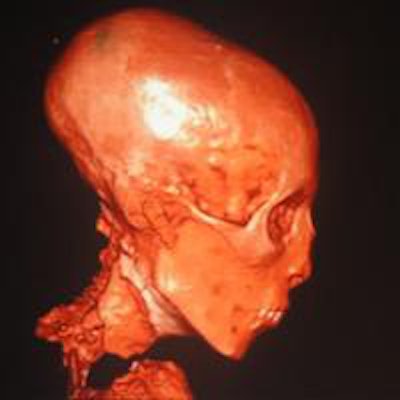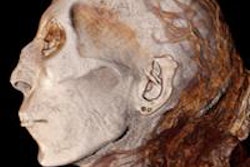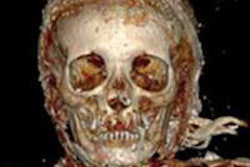
Using CT, Egyptian researchers found that ancient Egyptian royal families appear to have suffered from a degenerative spinal disease rather than an inflammatory type of arthritis, as previously assumed. Study results were published online in Arthritis and Rheumatology.
The research may help illuminate how diseases develop and suggest ways modern people could be affected, according to Dr. Sahar Saleem, of Kasr Al Ainy School of Medicine in Cairo, and colleague Zahi Hawass, PhD, an Egyptologist and former head of the Ministry of State for Antiquities (Arthritis Rheumatol, 20 October 2014).
Saleem and Hawass used CT to image 13 royal Egyptian mummies from the 18th to early 20th dynasties for signs of ankylosing spondylitis, a type of arthritis, or diffuse idiopathic skeletal hyperostosis (DISH), a degenerative spinal condition.
Previous research used x-ray images and claimed that three pharaohs (Amenhotep II, Ramesses II, and his son Merenptah) displayed evidence of ankylosing spondylitis, which causes pain and stiffness in the back and may lead to fusion of the spine, according to Saleem and Hawass. The current study ruled out a diagnosis of ankylosing spondylitis, due to a lack of joint erosion in the lower back and pelvis or fusion of sacroiliac joints or of small joints between the vertebrae in the spine.
Instead, Saleem and Hawass found evidence of DISH in four pharaohs: Amenhotep III, Ramesses II, Merenptah, and Ramesses III.
"The mummies of ancient Egypt offer a wealth of information regarding the history of disease," according to the authors. "In studying these ancient remains, we may be able to uncover the pathway of diseases -- like ankylosing spondylitis or DISH -- and how they might impact modern populations."



















